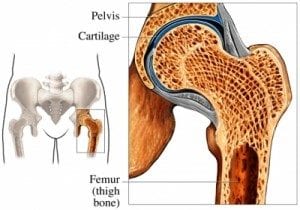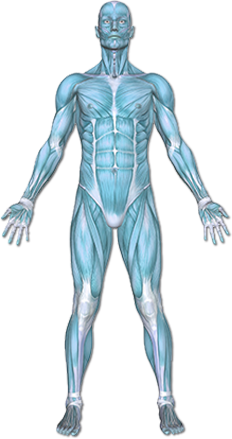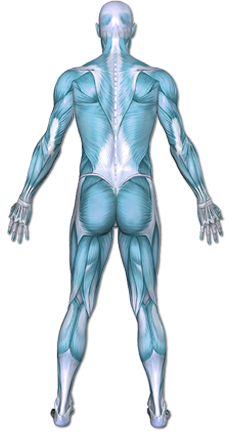Hip Labral Tear
A hip labral tear is an injury to the soft elastic tissue around the hip joint called the labrum. The hip joint is made of a ball and socket. The ball is the end of the thigh bone, also called the femur. This ball fits into the bowl-shaped socket in the pelvic bone, also called the acetabulum. Cartilage lines the socket to keep movement smooth and the joint cushioned. The labrum helps to hold the ball of the femur in place. When the this tears, it is called a hip labral tear.


Copyright © Nucleus Medical Media, Inc.
This content was created using EBSCO’s Health Library
Hip labral tears can result from wear and tear or from an injury.
This content was created using EBSCO’s Health Library
Factors that can increase your chances of getting a hip labral tear include:
- Wear and tear of hip joint from different activities, such as golf or softball
- Traumatic injury to hip
- Twisting injuries
- Motor vehicle accident
- Degenerative diseases like osteoarthritis
- Femoroacetabular impingement syndrome (FAI)
- Legg-Calve-Perthes disease
- Hip dysplasia
- Osteoarthritis
- Slipped capital epiphysis
- Capsular laxity/hip hypermobility
This content was created using EBSCO’s Health Library
Symptoms vary and can be mild, including:
- Hip pain: sharp, deep, disabling
- Locking or clicking of hip
- Hip instability
- Limited range of motion
- Tenderness to touch
- Groin, buttock, or thigh pain
- Pain during activity
This content was created using EBSCO’s Health Library
Your doctor will ask about your symptoms and medical history. A physical exam will be done. You will likely be referred to a specialist. An orthopedic surgeon focuses on bones and joints. Images may need to be taken of your hip. This can be done with:
- Magnetic resonance imaging (MRI) arthrography
- X-rays
An anesthetic may be injected to help diagnose this condition. If the pain gets better with the injection, the problem is in the joint which could be a labral tear.
This content was created using EBSCO’s Health Library
The goals and treatment plan for physical therapy management of a hip labral tear is specifically designed in accordance with individual patient symptoms. the specific care plan will be comprehensive in nature and organized into three phases based on individual patient progression and response to treatment.
- Phase 1 of the protocol will consist of pain control, core stabilization, and range of motion.
- Phase 2 focuses on muscle strengthening, returning normal movement patterns, and initiation of sensory motor training.
- Phase 3 emphasizes advanced sensory motor training, with sport-specific and specific functional progression. In addition, the physical therapist will provide specific education at each phase of the rehabilitation process and will work directly with the physician to achieve the goals.
This content was created using EBSCO’s Health Library
There are no known guidelines to prevent a hip labral tear.
This content was created using EBSCO’s Health Library
This content was created using EBSCO’s Health Library


